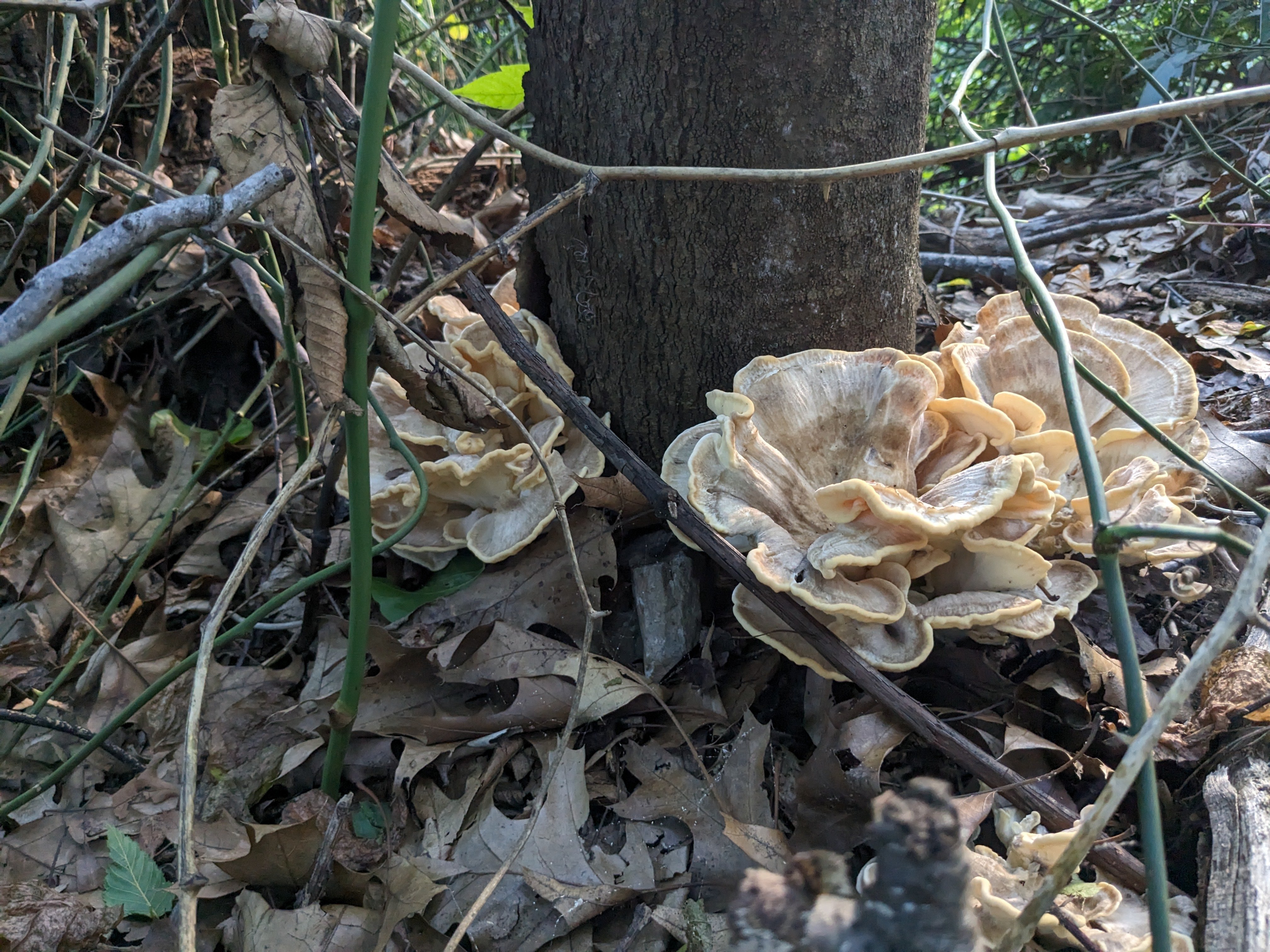I’m not an expert, just a Pennsylvanian. I believe it may be Berkeley Polypore. I have a large one, the size of my 4 year old that grows on an oak next to my house.
Mycology
Damn, and I thought the one that I found was big! That thing is huge!
They have been known to get much larger. I removed it from the tree before it could grow any more. They cause butt rot in oaks. It’s very large tree close to my home, I don’t want it dying anytime soon.
You picked the fruit but the infection is still eating the heartwood of the tree:
Common Questions About Berkeley’s Polypore How do I get rid of Bondarzewia berkeleyi?
Nothing works to get rid of the fungus pathogen in the tree. Fungicides don’t work. You can remove the fruiting body of the mushroom, but that does nothing to prevent the mycelium from sprouting new growth in following years. Keeping the tree healthy can prolong its life but eventually it will probably succumb. https://www.mushroom-appreciation.com/berkeleys-polypore.html
I know my tree may be doomed and removing the fruit will not save it. But ill try what I can to save it. Fungicides have been proven to be ineffective, but I’m not sure how they typically apply them. We treat ash trees by injecting them with a pesticide that targets emerald ash boring beetles. I’m going to try to apply that method with a fungicide to treat the cambium layer and see if that helps. Just because previous methods haven’t worked, doesn’t mean that new methods are completely pointless either.
This seems like a good match, this higher angle photo shows the rosette style growth they are apparently known for:

Not an expert, but looks a bit like turkey tail.
Turkey tail is 10x smaller and different colors and doesn't grow from the base of live trees like this.
That looks like mine but a lot more yellow, probably a chicken of the woods.
I don't know, I just thought they looked kind of similar. You're right about the color. These don't look like the typical chicken of the woods that I've seen.
